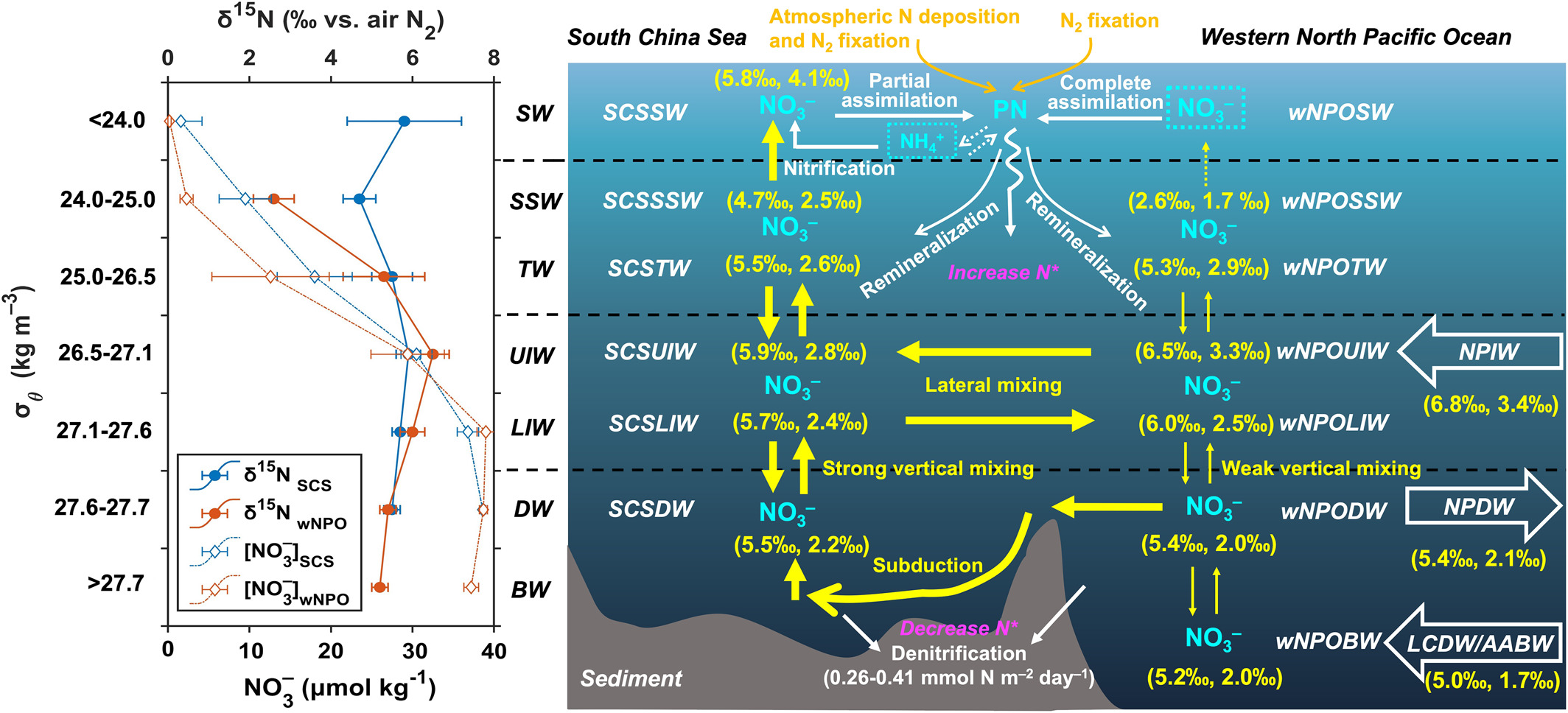Comparison of Nitrate Isotopes Between the South China Sea and Western North Pacific Ocean: Insights into Biogeochemical Signals and Water Exchange
Jin-Yu Terence Yang, Jin-Ming Tang, Sijing Kang, Minhan Dai,Shuh-Ji Kao,Xiuli Yan,Min Nina Xu, Chuanjun Du
Published in Journal of Geophysical Research, April 2022
Reconstructing past changes in the oceanic nitrate inventory with sedimentary N records in the South China Sea (SCS), which is the terminal of North Pacific Intermediate Water (NPIW), has regional and global implications. However, water-column nitrate cycling that affects N isotope preservation remains poorly understood in the SCS. We present a new data set of nitrate isotopes ( and
and  ) to elucidate nitrate dynamics in the SCS and the adjoining western North Pacific Ocean (wNPO). Greater increases in
) to elucidate nitrate dynamics in the SCS and the adjoining western North Pacific Ocean (wNPO). Greater increases in  than in
than in  are observed in the SCS euphotic zone, suggesting a combined effect of partial nitrate assimilation and nitrification. In the subsurface and thermocline waters of both regions, upward disproportional decreases in
are observed in the SCS euphotic zone, suggesting a combined effect of partial nitrate assimilation and nitrification. In the subsurface and thermocline waters of both regions, upward disproportional decreases in  and
and  accompanied by elevated nitrate anomalies (N*) indicate an accumulation of external N. Such changes are less significant in the SCS due to higher nitrate concentrations therein, although external N influxes are comparable in both regions. High
accompanied by elevated nitrate anomalies (N*) indicate an accumulation of external N. Such changes are less significant in the SCS due to higher nitrate concentrations therein, although external N influxes are comparable in both regions. High  and
and  values in the wNPO intermediate water result from the lateral transport of NPIW with isotopically more enriched nitrate from the remote denitrification zones followed by mixing with overlying water containing isotopically depleted nitrate. As NPIW flows into the SCS, its isotopically enriched signal is further diluted by strong vertical mixing with overlying and underlying waters in the interior. Compared to its source water from the wNPO, the SCS deep water has consistent nitrate isotopic compositions but significantly lower N*, indicating increased benthic denitrification at the wNPO margins with an estimated rate of 0.26–0.41 mmol N m−2 day−1.
values in the wNPO intermediate water result from the lateral transport of NPIW with isotopically more enriched nitrate from the remote denitrification zones followed by mixing with overlying water containing isotopically depleted nitrate. As NPIW flows into the SCS, its isotopically enriched signal is further diluted by strong vertical mixing with overlying and underlying waters in the interior. Compared to its source water from the wNPO, the SCS deep water has consistent nitrate isotopic compositions but significantly lower N*, indicating increased benthic denitrification at the wNPO margins with an estimated rate of 0.26–0.41 mmol N m−2 day−1.

Fig. Conceptual diagram of biogeochemical and physical processes that determine the distribution of water-column nitrate isotopes in the SCS and wNPO. Data shown in the parentheses are nitrate N (former) and O (latter) isotopic compositions in the corresponding water mass (right panel). The left panel shows the average nitrate concentrations (diamonds) and its isotopic composition (dots) in the corresponding water masses of the SCS and wNPO
Yang, J.-Y. T., Tang, J.-M., Kang, S., Dai, M., Kao, S.-J., Yan, X., et al. (2022). Comparison of nitrate isotopes between the South China Sea and western North Pacific Ocean: Insights into biogeochemical signals and water exchange. Journal of Geophysical Research: Oceans, 127, e2021JC018304. https://doi.org/10.1029/2021JC018304